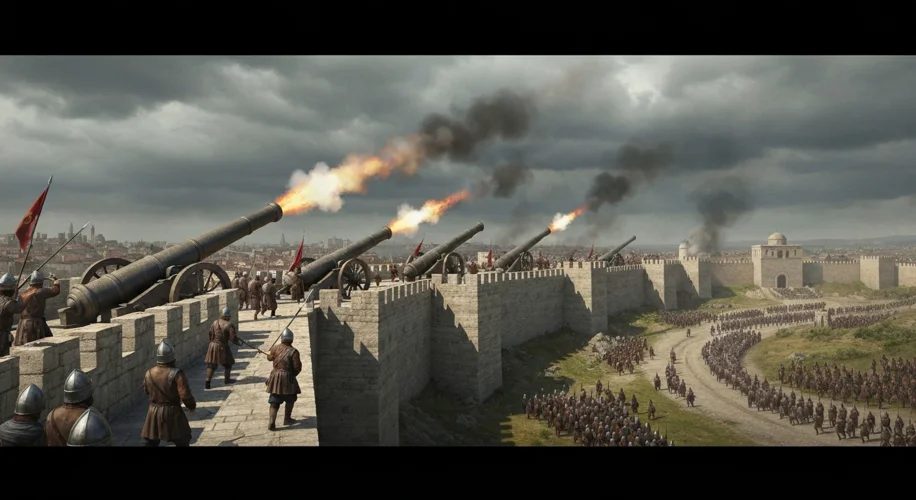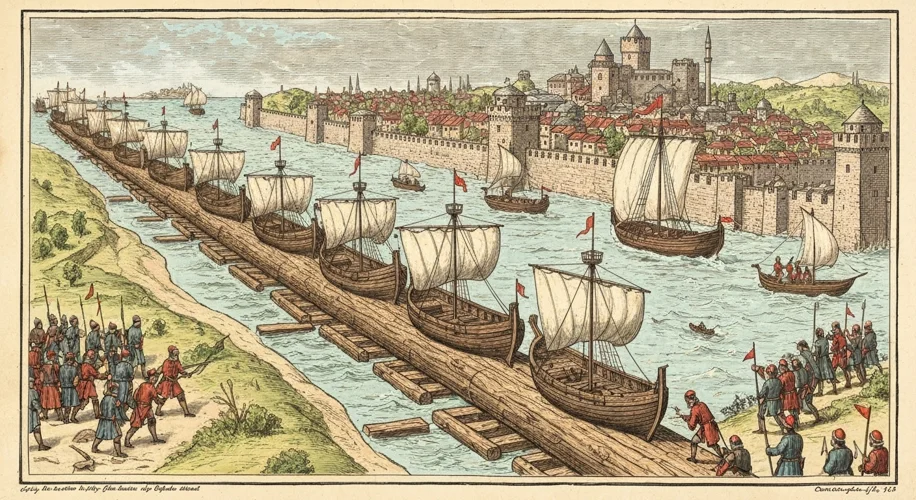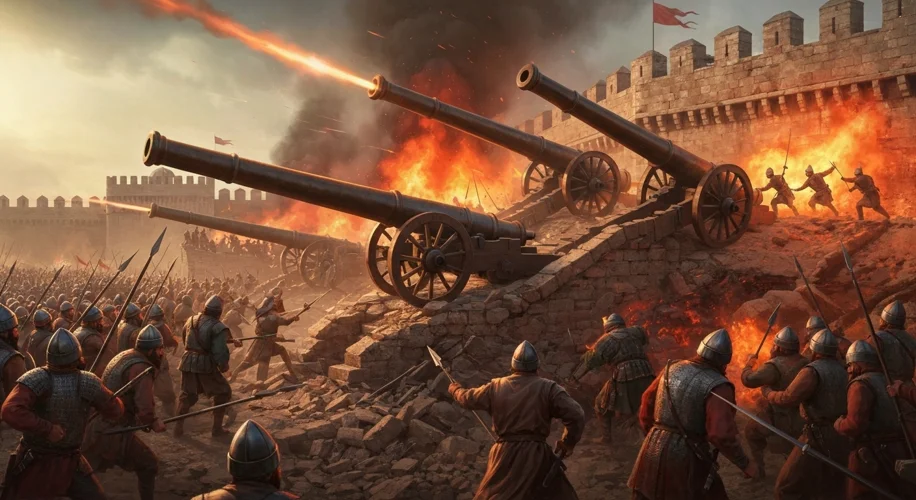Visualize this: a city, once the glittering jewel of an empire that spanned a millennium, now battered and besieged. The year is 1453, and the air hangs heavy with the scent of gunpowder and despair. Constantinople, the eternal city, the very heart of the Byzantine Empire – the last vestige of Rome – was facing its final hour.
For over a thousand years, Constantinople had stood as a bulwark, a crossroads of civilizations, a beacon of Christianity. Its legendary Theodosian Walls had repelled countless invaders, a testament to Roman engineering and Byzantine resilience. But the world was changing. A new power was rising from the East: the Ottoman Empire, fueled by ambition and led by a young, determined Sultan named Mehmed II.
Mehmed, barely twenty-one years old, harbored a singular obsession: to capture Constantinople. He saw it not just as a strategic prize, but as a divine mandate. He meticulously prepared, amassing an army of unprecedented size and commissioning enormous cannons, capable of hurling stone balls weighing hundreds of pounds. Among these was the infamous “Basilica,” a monstrous artillery piece designed by the Hungarian engineer Urban.
On the Byzantine side stood Emperor Constantine XI Palaiologos, a courageous but ultimately outnumbered leader. He rallied his dwindling forces, a mix of Byzantine soldiers, Genoese mercenaries, and other Christian allies. The odds were staggering. While the Ottomans could muster an army estimated at 80,000 to 200,000 men, the defenders numbered perhaps only 7,000.

The siege began in earnest on April 6, 1453. The massive Ottoman cannons unleashed a relentless barrage upon the ancient walls. Day after day, the stones trembled, dust and debris filled the air, and the defenders toiled to repair the breaches. The sheer scale of the Ottoman firepower was unlike anything the city had ever faced. The defenders fought with the ferocity of those defending their homes, their faith, and their very legacy.
One of the most ingenious aspects of the Ottoman strategy was their audacious plan to bypass the chain that blocked the Golden Horn, the city’s natural harbor. Instead of attempting to break the chain, Mehmed ordered his engineers to construct a wooden greased slipway. In a feat of incredible logistical effort, over sixty Ottoman ships were dragged overland, across greased logs, and launched into the Golden Horn, effectively outflanking the Byzantine defenses.

Despite the overwhelming odds, the defenders held on for nearly two months. Tales of individual bravery abound – the fierce resistance led by the Genoese soldier Giovanni Giustiniani Longo, who was mortally wounded, or the final, desperate charge of Emperor Constantine XI himself, who, according to legend, cast off his imperial regalia and fought alongside his men until he fell, his body never definitively identified.
The final assault came on May 29, 1453. The Ottomans breached the walls in multiple places. The fighting was brutal and chaotic. As the Ottoman flag was raised over the city, a profound silence fell, a silence that echoed the end of an era.
The fall of Constantinople sent shockwaves across Europe. It marked the definitive end of the Byzantine Empire, an empire that had preserved Greek and Roman culture for centuries. The loss was a devastating blow to Christendom, fueling fears of further Ottoman expansion into Europe.
But the consequences were far-reaching and complex. The influx of Byzantine scholars fleeing the city with precious Greek manuscripts is credited with helping to spark the Renaissance in Western Europe. The disruption of traditional land trade routes to the East spurred European powers to seek new maritime paths, directly contributing to the Age of Exploration and the eventual discovery of the Americas.

Constantinople, renamed Istanbul, became the magnificent capital of the Ottoman Empire, a testament to its growing power. The event reshaped the geopolitical landscape of the Mediterranean and beyond, signifying a major shift in the global balance of power.
The fall of Constantinople is more than just a military conquest; it is a poignant reminder of the cyclical nature of empires, the enduring human spirit in the face of overwhelming odds, and the profound, often unforeseen, ways in which pivotal historical events shape the course of civilization.

